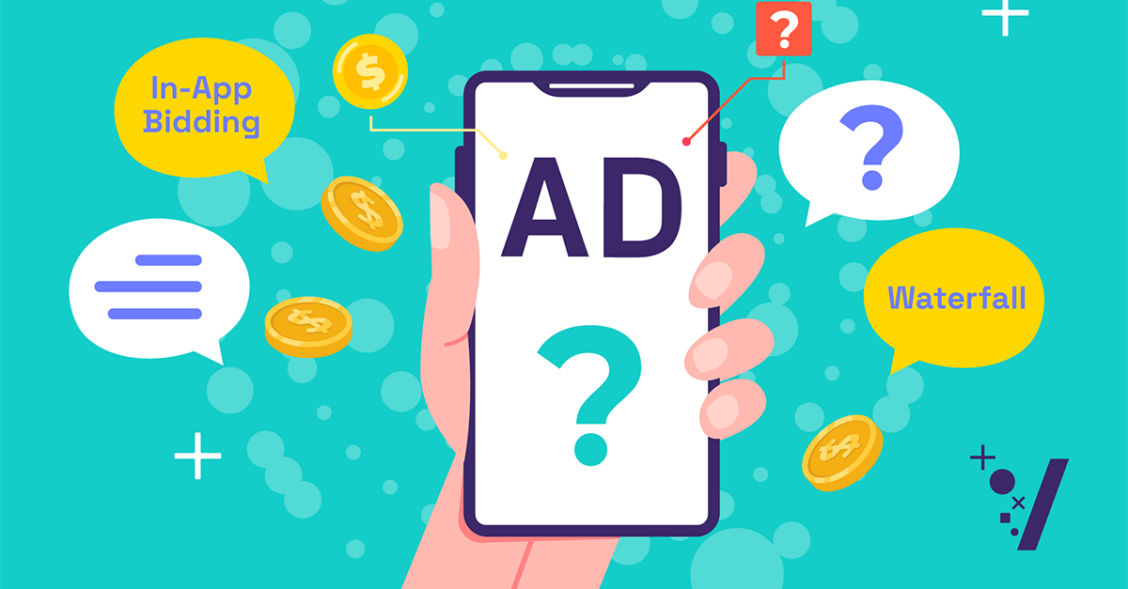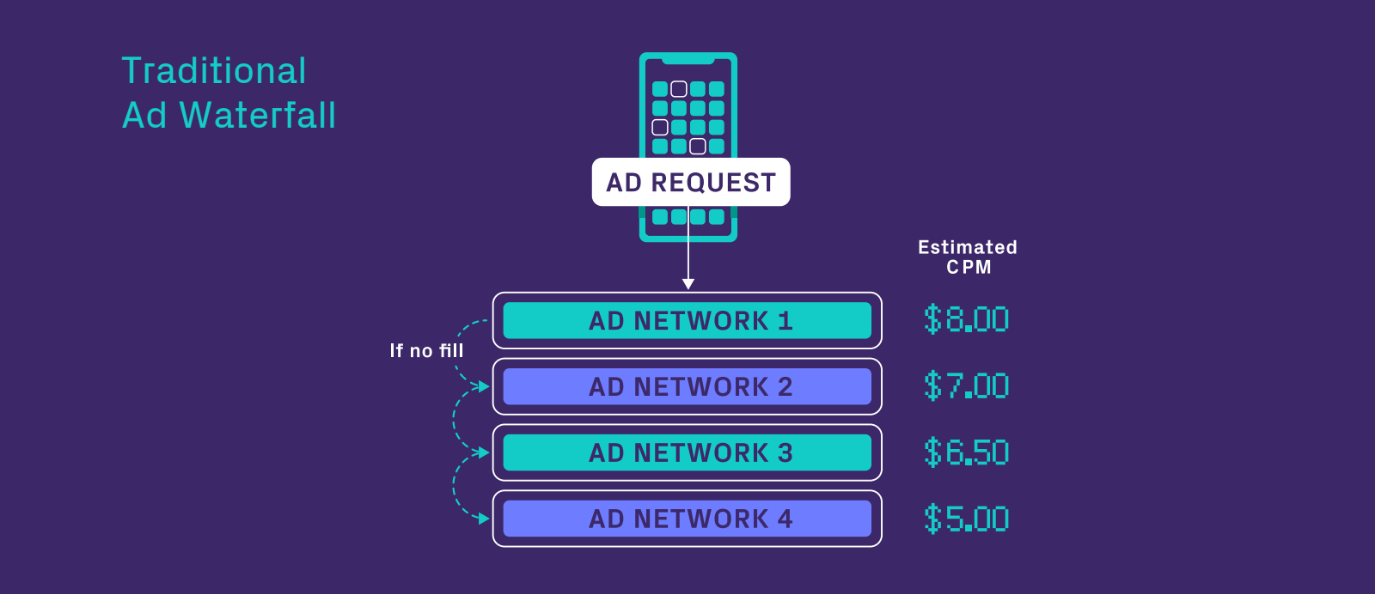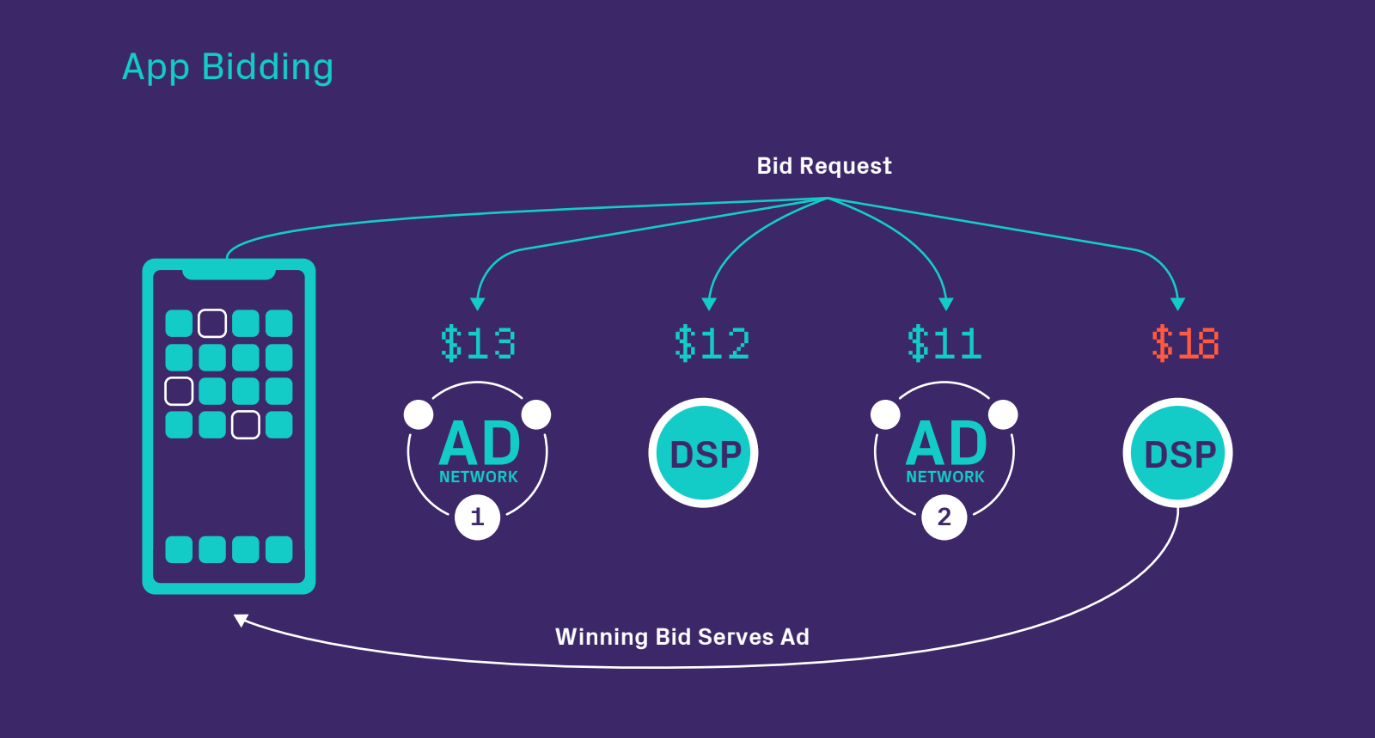
In-App Bidding Mid-2022, Where Are We At?
“In-app header bidding,” “app bidding,” and “mobile bidding” are just a few names for what is now most commonly known as “in-app bidding.” Header bidding had a powerful impact on desktop and mobile web advertising. It’s only customary that we expect a lot from the in-app version. However, global adoption of this major industry shift is still ongoing as many publishers weigh the pros and cons of making a transition.
Statista announced that in the second quarter of 2020, the global ad spend on in-app bidding grew by 26%. We also know that the adoption by publishers has increased since then, especially when big players announced discontinuing support for waterfall apps by 2022.
The industry keeps gathering data from publishers who are or did use in-app bidding and shared their experiences. The four main benefits of in-app bidding are fairness, transparency, increased revenue, and greater efficiency. The mobile ad community has validated these benefits, but let’s review some of the challenges facing in-app bidding and the future that lies ahead for it.
Do you remember header bidding back then?
Thanks to header bidding, web desktop publishers were able to offer their inventory to several ad exchanges, supply-side platforms (SSP), and demand-side platforms (DSP) at the same time.
Header bidding allowed them to manage their inventory better to increase their potential ad revenue. Although being a revolutionary concept back then, header bidding was complicated to set up. It added latency to publishers’ pages due to the required heavy coding on the web page and the lack of control over the response time in the web environment. The latency issue probably reminds you of the same problem created by some demand partners with slow response times on your traditional waterfall.
From the desktop, header bidding found its way to the mobile world. At first, it was through mobile web, then moved on from the concept of web page headers, and now app developers can easily use in-app bidding within an SDK integration.
In-app bidding solves that issue since all demand partners are called simultaneously, and the fastest, highest bidder gets the impression. It basically eliminates the risk of the broken waterfall method.
Is it time to move on from the traditional waterfall approach?
Let’s recognize that the waterfall method has served its purpose. Giving power to publishers to control and prioritize demand sources, it allows generating considerable revenue.
Unfortunately, every change in the waterfall is based primarily on historical data and floors. To optimize a waterfall setup, publishers have to put endless time and energy into moving calls and placements.
This means that publishers often create a waterfall setup that is prone to error and lost revenue. The winning network’s payout isn’t necessarily the highest available payout among all integrated networks. Instead of the cascading logic of a waterfall, in-app bidding offers the ability for all demand partners to bid simultaneously, letting the highest bidder take the win and the publisher maximize revenue for every single impression.
In the past, only larger app publishers took advantage of in-app bidding. But now, integrating this solution is easier and more accessible for any publisher. Because it doesn’t require considerable development resources, developers big and small can get a taste of in-app bidding.

Shall we talk about privacy changes and user acquisition?
If in-app bidding affects the way developers monetize, it will also affect how others budget for user acquisition. Although the optimizations happening on the ad networks side are usually considered a black box, new questions will arise about how UA managers will spend and manage their budget. For example, following the adoption of iOS 14+ in 2021, UA managers will have to give more attention to networks with strong performance on Limit Ad Tracking (LAT) traffic.
Additionally, if all networks are competing in bidding with similar technology, budget allocation will be reevaluated and will be based on more technical metrics such as features, creative diversity, and reporting capabilities. Other factors like pre-caching, which make sure good creatives will be effectively served, and enhanced fraud solutions will also come into consideration. Before, a network that had priority in a specific publisher could more or less guarantee a minimum number of impressions. This would now be more challenging under in-app bidding.
Despite Apple’s iOS 14.5+ release (now at 15.5) and the likelihood of having different user types (those who have opted in and those who have not opted in to activity tracking), in-app bidding will still help publishers maximize revenue on users not sharing their IDFAs. Similar to Apple’s, the recent Google Privacy changes are adding more pressure on publishers to be compliant and ensure ways to keep a stable revenue stream when lacking user-level data.
Is in-app bidding suited for all?
In-app bidding seems easy to adopt and would give publishers both operational and financial benefits. So why shouldn’t you abandon your traditional waterfall and move all your traffic to only in-app bidding? The answer is simply because in-app bidding adoption is still a work in progress. To increase competition, we need more demand sources to participate, support more ad formats, and continue to use machine learning to improve the technology.
One best practice is not to move exclusively to in-app bidding but rather to first build and experiment with a hybrid waterfall (mix of fixed-price and in-app bidding placements). This allows developers to A/B test revenue sources, test ad formats, and focus on app-level (not network-level) ARPDAU as one of the key success metrics. For networks, publishers can give a closer look to bid rates, win rates, and render rates to troubleshoot and evaluate competitiveness.
Looking outside of in-app advertising (IAA) focused apps, in-app bidding is the opportunity for publishers reluctant to use ads, like some IAP-focused and non-gaming apps, to give advertising a go. It gives them now an opportunity for a quick and easy integration with minimum resources requirement. Instead of making them feel that ads are detrimental, publishers can now realize that with a good integration, ads complement the whole user experience nicely and are, in fact, a healthy source of revenue.
It is undeniable that in-app bidding offers publishers more flexibility. It gives them more time to invest in other projects, such as testing new monetization strategies, improving user experience, and even creating more apps.

To be continued…
Improvements to in-app bidding will still come as more networks and publishers join the trend. We should also expect to see more networks offering server-to-server (S2S) integrations and impression-level revenue reporting, which will be very helpful in coordinating UA and ad monetization strategies.
The question is no longer if developers should integrate in-app bidding but rather how to intelligently integrate it to take advantage of all the benefits it offers. This entails picking the right apps, ad formats, and partners.
Vungle is currently bidding on several mediation platforms, including LevelPlay from ironSource, Max from AppLovin, and AdMob from Google. For more information about adding Vungle to your in-app bidding setup, please reach out to your account manager or [email protected].
People who read this blog were also interested in:
– The various ways of getting advertisers on your app
– Our ebook What is App Bidding?
